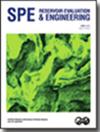Ensemble Machine Learning for Predicting Viscosity of Nanoparticle-Surfactant-Stabilized CO2 Foam
IF 1.5
4区 工程技术
Q3 ENERGY & FUELS
引用次数: 0
Abstract
This paper investigates the computational behaviors of simple-to-use, relatively fast, and versatile machine learning (ML) methods to predict apparent viscosity, a key rheological property of nanoparticle-surfactant-stabilized CO2 foam in unconventional reservoir fracturing. The first novelty of our study is the investigation of the predictive performance of ML approaches as viable alternatives for predicting the apparent viscosity of NP-Surf-CO2 foams. The predictive and computational performance of five nonlinear ML algorithms were first compared. Support vector regression (SVR), K-nearest neighbors (KNN), classification and regression trees (CART), feed-forward multilayer perceptron neural network (MLPNN), and multivariate polynomial regression (MPR) algorithms were used to create models. Temperature, foam quality, pressure, salinity, shear rate, nanoparticle size, nanoparticle concentration, and surfactant concentration were identified as relevant input parameters using principal component analysis (PCA). A data set containing 329 experimental data records was used in the study. In building the models, 80% of the data set was used for training and 20% of the data set for testing. Another unique aspect of this research is the examination of diverse ensemble learning techniques for improving computational performance. We developed meta-models of the generated models by implementing various ensemble learning algorithms (bagging, boosting, and stacking). This was done to explore and compare the computational and predictive performance enhancements of the base models (if any). To determine the relative significance of the input parameters on prediction accuracy, we used permutation feature importance (PFI). We also investigated how the SVR model made its predictions by utilizing the SHapely Additive exPlanations (SHAP) technique to quantify the influence of each input parameter on prediction. This work’s application of the SHAP approach in the interpretation of ML findings in predicting apparent viscosity is also novel. On the test data, the SVR model in this work had the best predictive performance of the single models, with an R2 of 0.979, root mean squared error (RMSE) of 0.885 cp, and mean absolute error (MAE) of 0.320 cp. Blending, a variant of the stacking ensemble technique, significantly improved this performance. With an R2 of 1.0, RMSE of 0.094 cp, and MAE of 0.087 cp, an SVR-based meta-model ensembled with blending outperformed all single and ensemble models in predicting apparent viscosity. However, in terms of computational time, the blended SVR-based meta-model did not outperform any of its constituent models. PCA and PFI ranked temperature as the most important factor in predicting the apparent viscosity of NP-Surf-CO2 foams. The ML approach used in this study provides a comprehensive understanding of the nonlinear relationship between the investigated factors and apparent viscosity. The workflow can be used to evaluate the apparent viscosity of NP-Surf-CO2 foam fracturing fluid efficiently and effectively.预测纳米颗粒-表面活性剂稳定CO2泡沫粘度的集成机器学习
本文研究了使用简单、相对快速、通用的机器学习(ML)方法预测表观粘度的计算行为,表观粘度是非常规油藏压裂中纳米颗粒-表面活性剂稳定的CO2泡沫的关键流变性能。我们研究的第一个新颖之处是研究ML方法作为预测NP-Surf-CO2泡沫表观粘度的可行替代方法的预测性能。首先比较了五种非线性机器学习算法的预测性能和计算性能。采用支持向量回归(SVR)、k近邻(KNN)、分类与回归树(CART)、前馈多层感知器神经网络(MLPNN)和多元多项式回归(MPR)算法建立模型。使用主成分分析(PCA)确定温度、泡沫质量、压力、盐度、剪切速率、纳米颗粒大小、纳米颗粒浓度和表面活性剂浓度作为相关输入参数。本研究使用了包含329个实验数据记录的数据集。在构建模型时,80%的数据集用于训练,20%的数据集用于测试。本研究的另一个独特方面是对各种集成学习技术的检验,以提高计算性能。我们通过实现各种集成学习算法(bagging, boosting和stacking)来开发生成模型的元模型。这样做是为了探索和比较基本模型(如果有的话)的计算和预测性能增强。为了确定输入参数对预测精度的相对重要性,我们使用了排列特征重要性(PFI)。我们还研究了SVR模型如何通过利用SHapely加性解释(SHAP)技术来量化每个输入参数对预测的影响来进行预测。这项工作的应用SHAP方法在解释ML发现预测表观粘度也是新颖的。在测试数据上,本文的SVR模型的预测性能最好,R2为0.979,均方根误差(RMSE)为0.885 cp,平均绝对误差(MAE)为0.320 cp。混合是叠加集成技术的一种变体,显著提高了这一性能。R2为1.0,RMSE为0.094 cp, MAE为0.087 cp,基于svr的混合元模型在预测表观粘度方面优于所有单一模型和集合模型。然而,在计算时间方面,基于svr的混合元模型并不优于其任何组成模型。PCA和PFI认为温度是预测NP-Surf-CO2泡沫表观粘度的最重要因素。本研究中使用的ML方法提供了对所研究因素与表观粘度之间非线性关系的全面理解。该工作流程可用于高效评价NP-Surf-CO2泡沫压裂液的表观粘度。
本文章由计算机程序翻译,如有差异,请以英文原文为准。
求助全文
约1分钟内获得全文
求助全文
来源期刊
CiteScore
5.30
自引率
0.00%
发文量
68
审稿时长
12 months
期刊介绍:
Covers the application of a wide range of topics, including reservoir characterization, geology and geophysics, core analysis, well logging, well testing, reservoir management, enhanced oil recovery, fluid mechanics, performance prediction, reservoir simulation, digital energy, uncertainty/risk assessment, information management, resource and reserve evaluation, portfolio/asset management, project valuation, and petroleum economics.

 求助内容:
求助内容: 应助结果提醒方式:
应助结果提醒方式:


